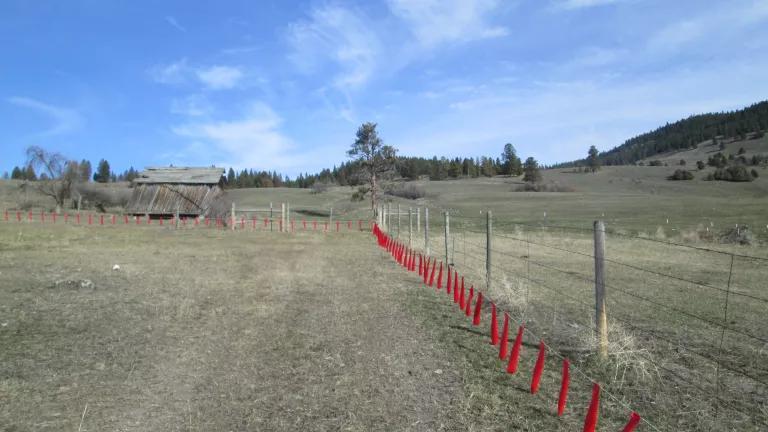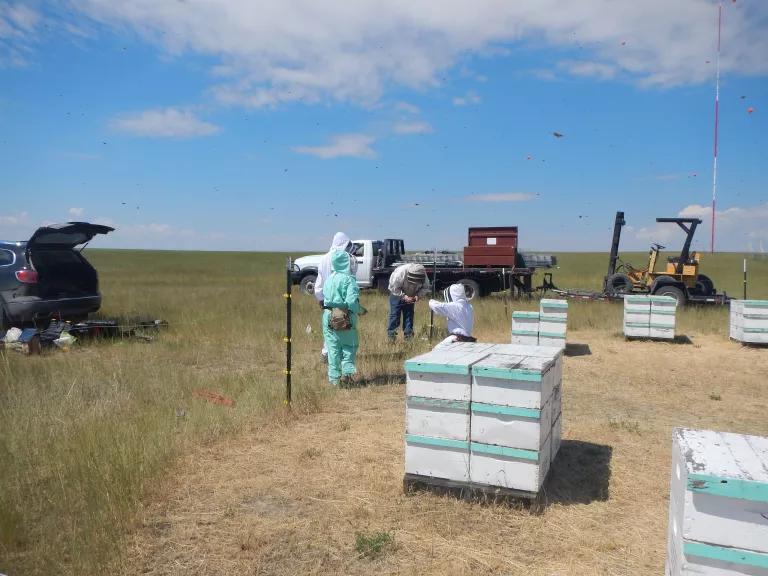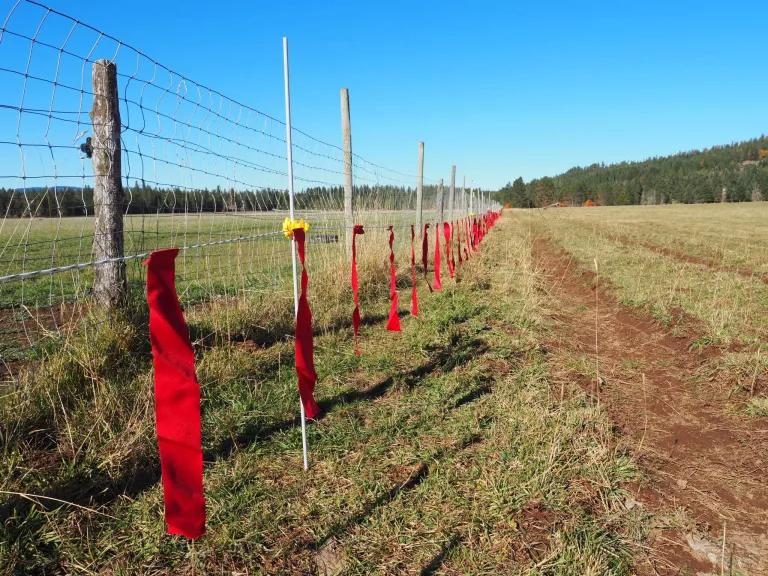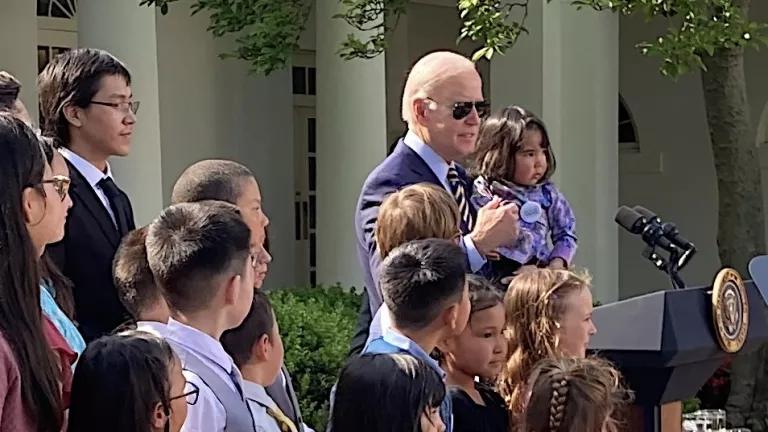Progress—through Unlikely Partnership—with Wildlife Services
Two years ago, NRDC and Montana Wildlife Services warily shook hands and agreed to try an experimental project working with each other and with ranchers to install electrified (“turbo”) fladry around livestock pastures in wolf country throughout the western part of state. The collaboration has exceeded all expectations, and continues to open new doors for further cooperation.

Turbo fladry set up around a pasture in western Montana.
NRDC
Two years ago, NRDC and Montana Wildlife Services warily shook hands and agreed to try an experimental project working with each other and with ranchers to install electrified (“turbo”) fladry around livestock pastures in wolf country throughout the western part of state. The project, and unlikely partnership, was a first for us both. We didn’t know if it would succeed or fail. We didn’t know if, despite our serious differences (such as on the use of M-44s), we would be able to work together toward a common goal of preventing livestock-predator conflicts. Two years later, I’m pleased to report that the collaboration has exceeded all expectations, and continues to open new doors for further cooperation.
When I last blogged about working with Wildlife Services, in February of last year, we had just spent our first day in the field setting up turbo fladry around a calving pasture in northwestern Montana. At the time, I wrote, “Of course, this effort is a small step. It’s one project in one state focused on a single tool.” Less than two years later, however, our joint efforts have grown to involve more than a dozen projects in four states using two different types of electric fencing. And all signs indicate our collaboration will only continue to expand. Here’s a quick update.
By the beginning of the summer in 2016, NRDC and Wildlife Services had completed our first season of installing, maintaining, and removing turbo fladry around several calving pastures in western Montana. Every pasture we worked in had experienced one or more wolf depredations in the recent past. While surrounded with fladry, not a single pasture experienced a depredation or loss.
Later that fall, NRDC worked with Wyoming Wildlife Services for the first time to set up fladry on a ranch near Jackson. In the weeks and days leading up to the project, wolves were killing cattle and, in response, Wildlife Services was killing wolves. The day we installed the fence, the killing stopped. That day, the agency also created a first-of-its-kind YouTube video discussing its use of fladry.
This year, with the help of NRDC’s first fencing technician, and the much-appreciated support of the National Wildlife Research Center (NWRC), we completed a second season of fladry projects with Montana Wildlife Services. Once again, while encircled by fladry, none of the protected pastures experienced a depredation or loss. In addition, and in another first, we worked with North Dakota Wildlife Services to install fladry around a sheep pasture experiencing coyote depredations. While the fladry was up, there were no attacks.
Meanwhile, we and Defenders of Wildlife split the cost with Wildlife Services of purchasing several more miles of fladry and related equipment (like energizers, posts, and insulators) for use in six additional western states: Washington, Oregon, California, Idaho, Utah, and Colorado. As a result, in less than two years, Wildlife Services went from owning no fladry in any western state to using or owning it in nine.

Protecting bee hives with permanent electric fence in southcentral Montana.
NRDC
This summer, we also worked with Wildlife Services and Defenders of Wildlife’s expert fencer Russ Talmo to erect several permanent electric fences around bee yards owned by a honey producer in southcentral Montana to prevent black bear damage (and perhaps future grizzly bear damage). That led to an invitation to speak at the annual Montana Beekeepers Association convention, where we discussed the project and Russ described different fencing designs.
Then, this fall, Oregon Wildlife Services invited us to present on the use of fladry and other preventive measures at a workshop it held with Jackson County in Medford. A few weeks later, my NRDC colleague Katie Umekubo joined the agency and NWRC staff in placing fladry around a cattle pasture in the southwestern part of the state.

Turbo fladry installed around a pasture in southwestern Oregon.
Photo: NRDC
As a next step, we’re working with Montana Wildlife Services to help the agency hire a new, exclusively non-lethal position dedicated to installing both fladry and permanent electric fencing to protect livestock and other property. Hiring such a position would be yet another first for the agency, and we hope it could serve as a model for Wildlife Services in other states to consider adopting as well.
These developments are extremely encouraging, and our sincere hope is that they continue and expand. Because much more work needs to be done. Last year in Montana, at least 133 cattle and 77 sheep were killed by wolves and grizzlies, and many more by coyotes and other predators. As a result, Wildlife Services shot, trapped, or poisoned 56 wolves, nearly 7,000 coyotes, 143 foxes, 5 black bears, 2 grizzly bears, and 24 mountain lions, among many other species.
These numbers need to come down—some of them way down. Fortunately, every conflict we can prevent is another life or lives—domestic and wild—that we can potentially save. Collaborating with Wildlife Services, conservation colleagues, ranchers, and others has created more and more opportunities for all of us to use and promote proactive, non-lethal approaches as an effective alternative to endless and needless cycles of conflict and killing.
We look forward to another year of progress, partnerships, and common purpose in figuring out how we can all live a little more peacefully with our wild neighbors in Montana and beyond.



